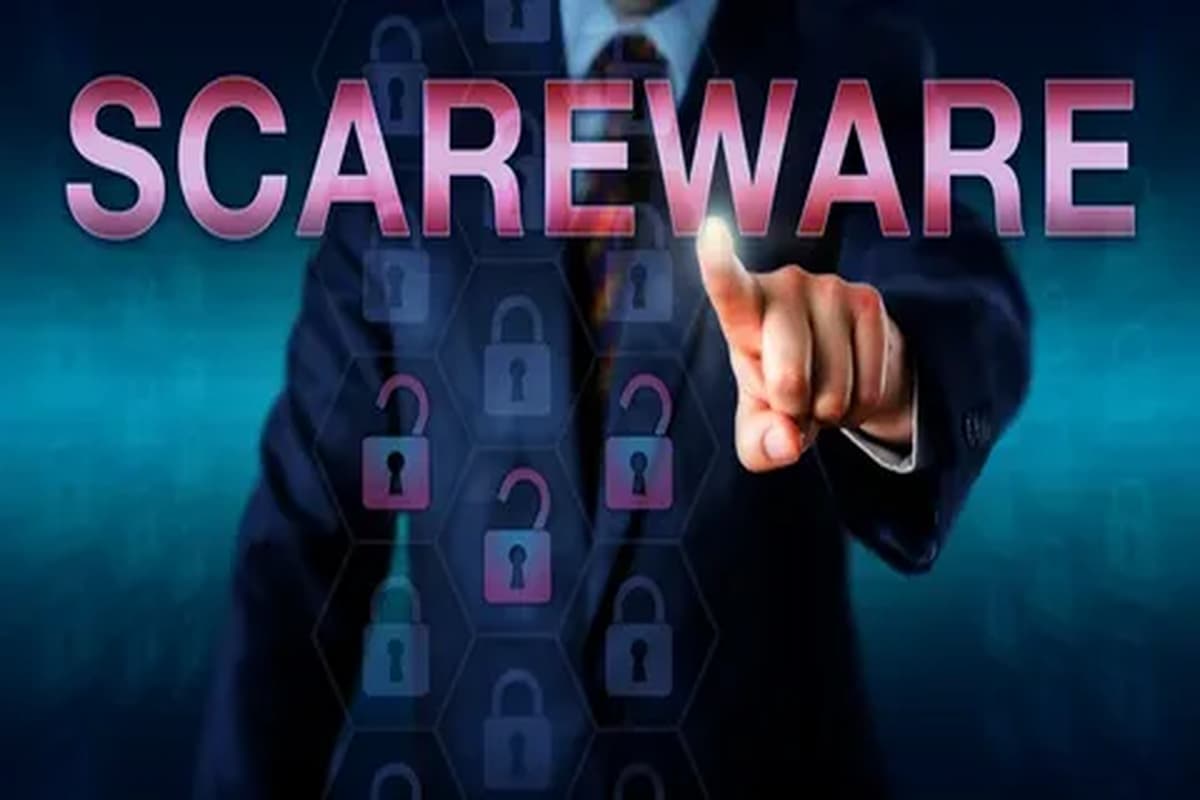Scareware is software that has been programmed to mimic the impression of the user that the computer harbors a virus infection or is susceptible to break-in security. The operation will primarily be comprised of impersonator pop-ups, impersonator security notifications, and warning messages that prompt the user to rapid action, hopefully in the purchase or installation of fake software.
Definition of Scareware and How Scareware Works
What is Scareware in Cyber Security? The Scareware is constructed on the fear and scare technique. ScaThe reware appears in the form of warning messages to surfers of a website or malware pop-up alerts on the computers of users that the system has some malware. Scareware exploits such alerts to initiate installing fake imposter antivirus programs or purchasing unwanted technical assistance. Scareware infects the system again by gathering information, reporting on a daily basis, or installing other malware during installation.
2. Scareware Method Used Most Often
False Safety Notifications
The scareware method most often used is the false reporting of viruses by users. They are presented as authentic antivirus warnings and inform users that they ought to do something immediately, i.e., purchase an antivirus application to repair nonexistent issues.
False Pop-ups and Alerts
Scareware Attack largely takes the form of pop-ups inundating one’s screen round-the-clock. Scareware will alert users that privacy has been violated in some way, or system performance is not heading in the direction one would prefer and they should take respective action accordingly.
Social engineers employ social engineering methods for the exploitation of the emotional human factor. Social engineers issue threats that produce fear, panic, and anxiety and provoke irrational user behavior like clicking and sharing money information.
3. Scareware Impact on Users and Organisations
Financial Losses
Imitator security software or phony technical support services would be charged from Vicitm customers. Economically, groups themselves would be vulnerable to device compromise, time wasted due to production, and remediation expenses through IT.
Information Stolen and Privacy Threats
Scareware programs earn as much as more than its showy imposter; the program can drain personal data like passwords, credit card details, and surf history available for exploitation by identity theft or auctioned to the black web.
Psychological Manipulation
The scareware that instills fear can also traumatize and panic the users. The scareware victims have no choice but to react with a reflex action, and in the process of doing so, they are doing something they would never be visiting if their minds were well.
4. Scareware Detection and Prevention
Detection of False Alerts
The user needs to be inform of emergency abuse or high-pressure sales security risk. Quality security software never tries to scare users into installing additional software they don’t need or into buying an emergency.
Safe Browsing Habits
Safe browsing can reduce scareware risk. Users should never click on suspicious advertisements, never download programs from suspicious websites, and should turn on web browser pop-up blocking.
Legitimate Security Software
Installation of legitimate antivirus software can identify and protect against scareware attacks. It is install by users for protection and security products are bought from legitimate vendors directly by users.
5. Removal of Scarewares
Hand Removal Techniques
Scarewares and malware are installe and download on the machine by users and trie to be remove by uninstalling malware, removing add-ons of scarewares-browser, and deleting temporary files.
Installation of Anti-Malware and Antivirus Software
Full system scan by the services of professional legal antivirus or anti-malware software can identify and eliminate scarewares infections. Affected malware can be delete or quarantine.
Professional Assistance
People can be referre for getting professional IT assistance for uninstalling the infection and system integrity restoration in case the scarewares scontinues to occur repeatedly and infectious.
6. Real-Life Scarewares Attack Examples
Famous Scarewares Campaigns
There was a high-profile scarewares assault on consumers across the world. A good example of this was the “Fake Microsoft Support” scam, in which users were made to feel as though they were in immediate need of technical support and thus vulnerable to financial scams. The “Antivirus 2009” scam is yet another example of a trick that users buying fake antivirus protection.
Lessons Learned from Past Incidents
From earlier scarewares infections, organizations and users are already immune as soon as they become aware of the menacing security warnings. Cybersecurity best practices with the most important ones being obligatory expertise, best practices, and sufficient security training are the best to avoid scarewares infection.
7. Conclusion
The Importance of Cyber Awareness
The best way of removing the threats is to educate people on scarewares and other threats. Users on scarewares, will be in a position to recognize and avoid the tactics of threatening hackers.
Future Trends in Prevention of Scarewares
Security solutions are in the stage of development, which will force consumer and business markets to stay inform of the newer threats. Next-generation threat detection technology, AI security, and power users will be the drivers that push future security way ahead of scarewares.
Visit Blogger Creativa for more informative blogs.
